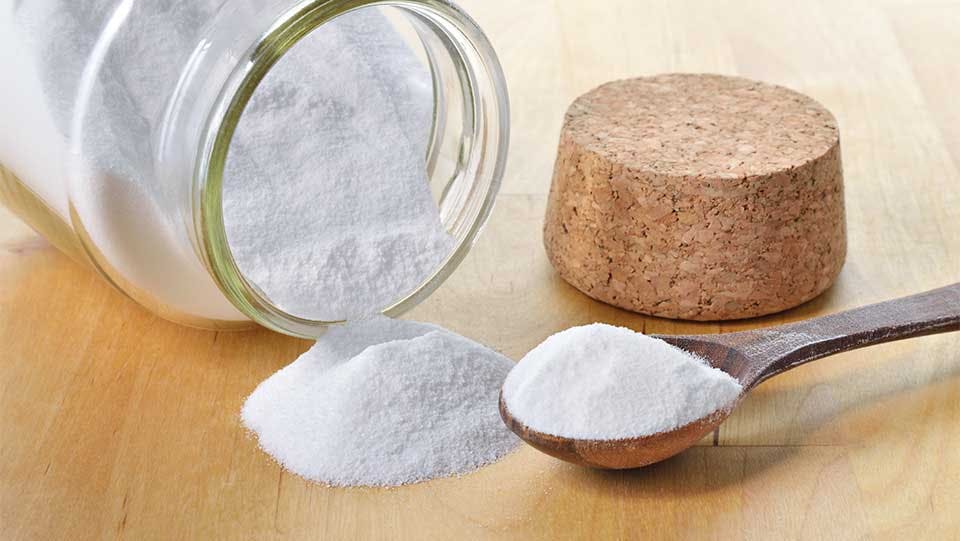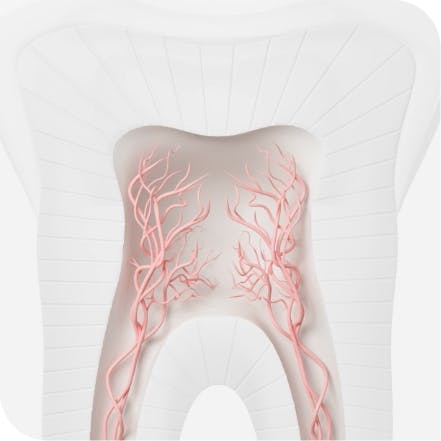
Baking soda is a ubiquitous household staple used for cooking, deodorizing, and cleaning. It’s also found in plenty of oral health products—especially toothpastes designed for whitening. Compared to toothpastes that don’t contain baking soda, those with the ingredient have been clinically proven to remove more surface stains.i But can baking soda alone be used to whiten teeth?
What Is Baking Soda & How Does it Whiten Teeth?
Baking soda, also known as sodium bicarbonate, is typically encountered on its own as a white powder but is often found as an ingredient in topical cleaning solutions. It is naturally alkaline, or basic, which is the opposite of acidic.ii When added to a toothpaste, it acts as an abrasive—a kind of mechanical whitener (as opposed to a chemical whitener, like a peroxide).i
When brushing with a toothpaste containing an abrasive, surface stains (also called extrinsic stains) are actually polished away from the enamel of the teeth. When it comes to baking soda, toothpastes that incorporate baking soda as a mechanical whitener are as successful at stain removal as other abrasives.iii
Current studies support baking soda as an effective mechanical whitener when added to toothpaste and used with a manual toothbrush—but there is a gap in clinical data about these toothpastes being used with powered toothbrushes.iii
Can baking soda on its own be used as a DIY tooth whitener, though?
As it turns out, it can be.
Using Baking Soda as a Tooth Whitener
Technically speaking, one could use baking soda and water to whiten teeth by polishing away extrinsic stains. While it is an abrasive, its high solubility means that it remains safer than other abrasives as its concentration increases.iv
How is that possible? Whitening toothpastes typically include more than one whitening mechanism in both the chemical whitening and abrasive whitening categories. While baking soda alone is an effective tooth whitener, it is often paired with other whitening mechanisms to boost whitening efficacy.iv While these ingredient combinations offer enhanced whitening results, they also often prove more abrasive because of these additives.iv
Should You Use Baking Soda Alone to Whiten Teeth?
While baking soda is less abrasive than other additives that are sometimes found in whitening toothpastes, care should still be taken with direct application—it’s still an abrasive and can affect enamel strength over time or if used incorrectly.i,vi Just because you can use baking soda by itself for whitening teeth doesn’t mean you should, and not just because of the abrasivity risk. Toothpaste is about way more than whitening, after all. Here’s what you miss out on when you focus only on baking soda for your oral health:iii
- Cavity prevention with the addition of fluoride
- Breath freshening
- Inflammation and/or bleeding reduction
- Sensitivity reduction
Other Teeth Whitening Options
In addition to using products with baking soda, other teeth whitening options include:v
- Professional in-office procedures
- Recommended whitening products from your dental team
- Over-the-counter (OTC) whitening products
OTC whitening products are available as trays, strips, gels, rinses, and more. Hydrogen peroxide is used in most whitening products, but it can cause side effects such as increased tooth sensitivity in some users.vi If you have sensitive teeth but are still looking to remove teeth stains, try a low-abrasive toothpaste like Sensodyne Clinical White, a new product that combines clinically proven ingredients and the sensitivity protection* you can trust from Sensodyne.
When it comes to achieving a brighter smile, efficacy is key—which is why it makes the most sense to choose whitening products that are clinically proven and professionally manufactured. Try Sensodyne Clinical White for whiter, brighter teeth after eight weeks of twice daily brushing.
*With twice daily brushing
Source Citations:
- National Library of Medicine. “Stain removal and whitening by baking soda dentifrice: A review of literature." https://pubmed.ncbi.nlm.nih.gov/29056186/.
- National Library of Medicine. “Sodium Bicarbonate.” https://pubchem.ncbi.nlm.nih.gov/compound/Sodium-bicarbonate
- JADA. “Stain removal and whitening by baking soda dentifrice.” https://jada.ada.org/article/S0002-8177(17)30811-5/fulltext
- MouthHealthy. “Natural Teeth Whitening.” https://www.mouthhealthy.org/all-topics-a-z/natural-teeth-whitening/
- Whitening. American Dental Association. https://www.ada.org/resources/research/science-and-research-institute/oral-health-topics/whitening. Accessed 12/19/22.
- The Perils of Sensitive Teeth. University of Utah Health. https://healthcare.utah.edu/healthfeed/2017/12/perils-of-sensitive-teeth. Accessed 6/20/23.




